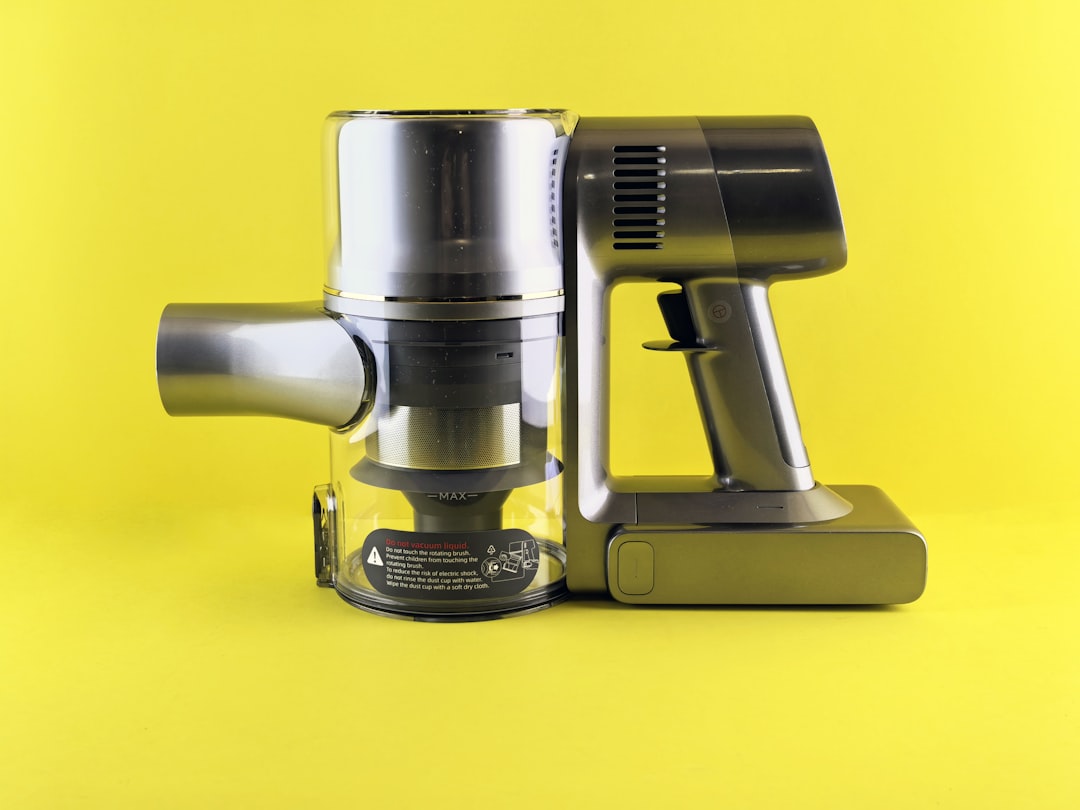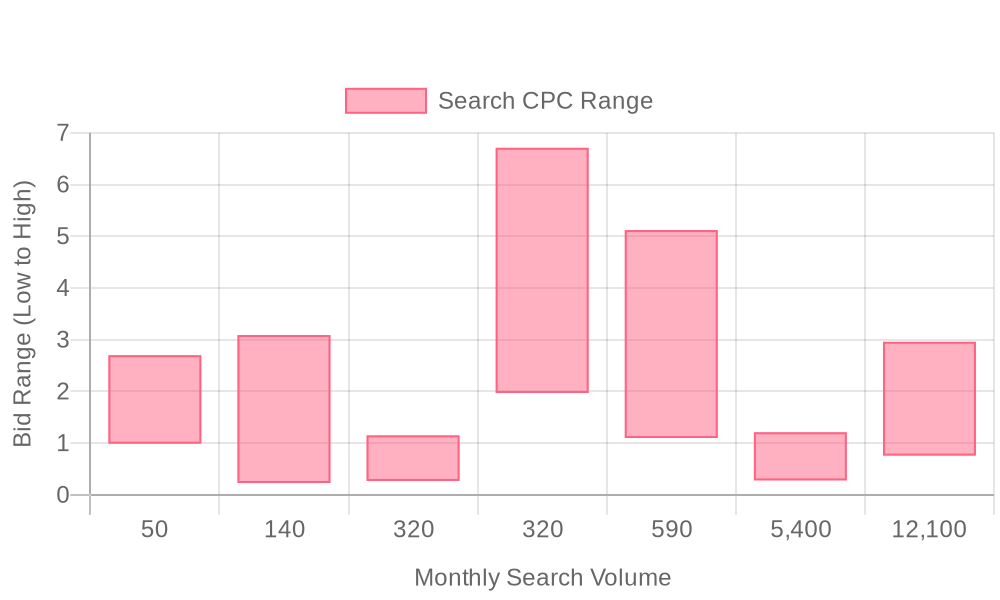
Supercharge your lead generation with a FREE Google Ads audit - no strings attached! See how you can generate more and higher quality leads
Get My Free Google Ads AuditFree consultation

No commitment
Supercharge your lead generation with a FREE LinkedIn Ads audit - no strings attached! See how you can generate more and higher quality leads
Get My Free Google Ads AuditFree consultation

No commitment
Supercharge your lead generation with a FREE Meta Ads audit - no strings attached! See how you can generate more and higher quality leads
Get My Free Google Ads AuditGet My Free LinkedIn Ads AuditGet My Free Meta Ads AuditFree consultation

No commitment
Supercharge your lead generation with a FREE Google Ads audit - no strings attached! See how you can generate more and higher quality leads
Get My Free Google Ads AuditFree consultation

No commitment
In today's complex marketing landscape, effective B2B marketing for vacuum cleaning systems requires a strategic mix of both online and offline channels working in concert. Online channels like social media build digital brand awareness, email marketing nurtures ongoing relationships, and SEO drives organic visibility. Meanwhile, offline activities such as trade shows generate face-to-face connections, direct mail creates tangible touchpoints, and industry publications establish thought leadership. Within this integrated ecosystem, Google Ads plays a critical middle-funnel role by capturing high-intent prospects at the exact moment they're searching for solutions—effectively bridging the gap between broader awareness efforts and the sales process. For businesses in the vacuum cleaning systems industry, Google Ads represents a powerful opportunity to bridge online and offline marketing efforts, intercepting decision-makers at their precise moment of need, whether they're following up after a trade show or responding to a direct mail piece.

Professionals in the vacuum cleaning systems sector face a unique challenge: reaching decision-makers in a crowded, competitive market where timing and relevance drive conversion. A precise digital marketing strategy, centered on paid search, provides the scalability and data-driven control required to consistently generate high-quality leads. For an industry-specific overview, review the vacuum cleaning system supply solutions available to commercial and industrial buyers.
This playbook details a robust approach for integrating Google Ads into your overall marketing mix, ensuring every dollar targets the right audience at the right time. It is designed for B2B marketers, service providers, and local operators aiming to maximize lead generation, optimize spend, and unify data across channels for holistic visibility. For additional tips on campaign performance, explore our marketing analytics and B2B growth strategies.
By following this step-by-step framework, vacuum cleaning system providers can generate more qualified leads, shorten sales cycles, and achieve higher marketing ROI within a unified, data-driven environment. To put these strategies into action, get started for free with Sona.

Digital marketing for vacuum brands requires precision when targeting facilities managers, purchasing agents, and operational leads making high-stakes procurement decisions. Google Ads enables you to intercept these specialized buyers at their moment of need, using advanced tools to identify not only anonymous site visitors but also the companies behind them, turning web traffic into actionable sales intelligence.
The commercial vacuum cleaning system sector operates in a landscape where high-value projects, such as large-scale installations or system overhauls, can easily slip through the cracks if not surfaced with strategic advertising. With vacuum cleaning system supply solutions, companies can prioritize visibility for these higher-margin services, ensuring they are front and center when decision-makers begin their search, before competitors can engage.
Immediate demand response is critical, especially when breakdowns occur or demand spikes. Google Ads campaigns can be launched or adjusted in real time, so you capture urgent leads before they turn elsewhere. This rapid activation, combined with real-time intent data, empowers teams to shift budgets toward accounts showing the highest likelihood to convert, maximizing efficiency and accelerating sales cycles.
Expanding into new regions or targeting emerging metropolitan areas requires granular control over ad placement and messaging. Google Ads allows vacuum system suppliers to tailor campaigns to the language, pain points, and regulatory environment of each region, ensuring relevance and resonance with local prospects. For insights on maximizing campaign effectiveness, explore our marketing playbooks.
Integrated data analysis closes the loop between digital interaction and sales outcomes. When CRM and ad platforms are unified, teams can attribute every click and conversion, both online and offline, to actual closed deals. This alignment informs future strategy, prevents message fragmentation, and ensures ongoing optimization, leading to more coherent, effective campaigns for every phase of the buyer journey. To experience seamless campaign analytics and smarter targeting, get started for free with Sona.

A well-rounded digital marketing strategy for vacuum cleaning systems leverages multiple Google Ads campaign types to capture intent, reinforce brand presence, and drive measurable results across the funnel. Each campaign format plays a distinct role in connecting with buyers at different stages of their journey, delivering targeted messaging, and adapting to evolving signals of purchase readiness. For a comprehensive overview of policy considerations during sensitive events, review Google Ads' sensitive events policies. Explore more digital advertising insights in our marketing analytics blog.
Combining these campaign types with advanced data unification and real-time audience updates transforms Google Ads for Vacuum Cleaning Systems into a precise, high-performing growth engine. Each interaction is tracked, attributed, and optimized, enabling B2B revenue teams to make informed decisions and accelerate pipeline velocity. Ready to see this in action? Get started for free with Sona.

Expanding your visibility in the vacuum cleaning systems market requires moving beyond standard digital channels. Growth comes from targeting the right verticals, understanding competitor weaknesses, and ensuring your message reaches decision-makers where they are most likely to engage.
Identifying these growth levers enables vacuum cleaning system marketers to prioritize high-value opportunities and allocate resources efficiently, ensuring every dollar invested in digital channels drives measurable demand. For a deeper dive into advanced retargeting strategies, explore how intent data and dynamic audience sync can further scale your campaigns. If you’re ready to identify hidden opportunities and accelerate growth, get started for free with Sona.

Marketing teams that apply precise audience segmentation to vacuum cleaning system campaigns see higher engagement and conversion rates. Segmenting audiences empowers teams to deliver messaging optimized for each buyer’s needs, increasing relevancy and lifetime value. For more on building an effective segmentation strategy, explore our guide to account-based marketing.

| Industry | Keyword | Monthly Search Volume | Competition Level | Low Bid | High Bid |
| Vacuum Cleaning Systems | vacuum cleaning systems | 50 | MEDIUM | 0.99 | 2.7 |
| Vacuum Cleaning Systems | gutter vacuum systems | 140 | HIGH | 0.23 | 3.09 |
| Vacuum Cleaning Systems | bissell crosswave all in one multi surface cleaner | 320 | HIGH | 0.27 | 1.15 |
| Vacuum Cleaning Systems | industrial vacuum systems | 320 | HIGH | 1.97 | 6.71 |
| Vacuum Cleaning Systems | industrial robot vacuum | 590 | HIGH | 1.1 | 5.12 |
| Vacuum Cleaning Systems | handheld car vacuum | 5400 | HIGH | 0.28 | 1.21 |
| Vacuum Cleaning Systems | central vacuum system | 12100 | HIGH | 0.76 | 2.96 |
A precise keyword strategy is foundational for successful Google Ads campaigns in the vacuum cleaning systems market. By targeting intent-driven search terms, revenue teams capture prospects who show clear buying signals, maximizing both lead quality and conversion rates.
Effective campaigns for Google Ads for Vacuum Cleaning Systems prioritize a blend of high-converting, long-tail keywords and broader terms to balance volume with precision. For an in-depth guide on leveraging Google Ads to generate leads in the cleaning sector, explore this Google Ads for cleaning business resource. Strategic selections include:
For B2B marketers, integrating these keyword sets with dynamic audience data ensures messaging remains relevant as leads move through the funnel. Real-time syncing of CRM data and ad audiences further refines targeting, so campaigns continuously adapt to changing buyer behaviors. This approach eliminates wasted spend, increases qualified lead volume, and provides the granular visibility modern revenue teams require. To experience seamless keyword targeting and audience integration, get started for free with Sona.
Precision in keyword selection drives high-value traffic for vacuum cleaning system providers. Start by clustering keywords according to service type: regular maintenance, deep cleaning, commercial installations, and specialized repairs. This segmentation ensures each campaign aligns with relevant buyer intent.
Localize your keyword lists by adding city names and "near me" modifiers, capturing customers searching for solutions in specific regions. Long-tail and question-based queries draw in users with immediate needs or deeper research intent, often resulting in higher conversion rates. Apply negative keywords to filter out irrelevant searches, optimizing spend and enhancing lead quality. For best practices on maximizing targeting precision, review our marketing playbooks.
For the most effective campaigns, align keyword strategy with your existing content marketing. By mirroring the terms and questions present in your educational resources, you amplify your search relevance and maintain a cohesive brand experience across channels. Unifying keyword insights with first-party website and CRM data allows marketers to target not just anonymous clicks, but identified companies and decision-makers demonstrating real purchase intent.
Ad copy should directly address the pain points faced by your target audience. Headlines that reference common issues—such as system downtime or inefficient cleaning—immediately signal relevance. Incorporate trust markers like certifications, third-party reviews, and star ratings to establish credibility and differentiate your brand from competitors. For inspiration on premium positioning, explore this analysis of vacuum cleaner pricing strategies.
Urgency is a proven motivator: offering incentives such as free quotes or same-day service can drive immediate action. Utilize ad extensions, including call buttons and structured snippets, to provide additional information and frictionless contact options.
Ensure your ad messaging remains consistent with your broader marketing communications, including social media and email campaigns. When your audience is exposed to uniform messaging across multiple touchpoints, trust and recall improve. Integrating real-time engagement data from web and email activity enables marketers to dynamically update ad creative, promoting offers or messaging that resonate with high-intent segments.
A strong campaign aligns keywords, ad copy, and landing page content in a seamless journey. For vacuum cleaning system advertising, each landing page should mirror the promise made in the ad and address the specific needs of the targeted audience segment. For examples of effective landing pages in this industry, see this vacuum cleaning system supplier profile.
Key elements of an effective landing page include ROI calculators, trust badges, and recent testimonials. These features build confidence and help buyers justify investment, especially for B2B or enterprise-grade systems. Calls to action must be clear, visually prominent, and easily accessible on all devices to maximize lead capture. For a deeper dive into landing page optimization, visit our blog on B2B marketing reports.
Integrate forms directly with your CRM system to eliminate delays in follow-up. When a visitor submits their information, immediate routing to sales ensures every opportunity is captured at peak interest. Connecting CRM and ad platform data also enables dynamic audience updates, so leads are automatically moved between remarketing and nurture tracks as they progress through the funnel.
Effective optimization blends quantitative insights and strategic adjustments. Track both micro-conversions (downloads, form fills) and macro-conversions (qualified meetings, closed deals) to understand campaign impact across the funnel. Leverage smart bidding strategies such as Target CPA or Max Conversions to continuously improve cost efficiency and conversion rates. For policy compliance in sensitive situations, review Google’s overview of Google Ads policies on sensitive events.
Routine A/B testing of headlines, imagery, and CTA placements uncovers what resonates most with your audience. Importing offline conversions—such as deals closed after a sales call—back into your ad account enables more accurate bidding and attribution, helping you prioritize high-value channels. For step-by-step instructions, see our guide to importing ad platform cost data into Google Analytics.
Centralizing all campaign data, including Google Ads, CRM, and sales outcomes, makes it possible to identify trends and inform future content creation. Marketers who sync enriched audience data and closed-loop attribution into their ad platforms gain a holistic view of campaign ROI, ensuring every dollar spent is connected to real business outcomes.
Maximizing market presence in vacuum cleaning systems starts with a unified approach to content, advertising, and data-driven decision-making. Consistent engagement across channels and leveraging granular CRM insights ensures every lead and customer interaction moves you closer to measurable growth.
Effective campaigns for vacuum cleaning systems depend on precision in targeting, segmentation, and measurement. By connecting your ad data, CRM, and web analytics, you close the loop on both online and offline conversions, eliminating missed attribution and providing a clear view of ROI. This unified approach empowers you to identify high-value prospects early, personalize engagement across the funnel, and continuously optimize campaign performance in a fast-moving B2B environment. If you’re ready to elevate your strategy, get started for free with Sona.
As we conclude our exploration of leveraging Google Ads for vacuum cleaning systems, it's clear that a well-structured, data-driven approach can significantly enhance your marketing efforts. By understanding the intricacies of Google Ads, you can effectively reach your target audience and drive sales for your vacuum cleaning solutions.
Throughout this article, we've delved into the core challenges of reaching niche markets, discussed strategic ad campaign structures, and highlighted optimization tips tailored specifically for vacuum cleaning systems. These strategies are designed to help you maximize ad spend efficiency and achieve your marketing goals.
Imagine the potential growth and brand visibility you can achieve by implementing these insights. By adopting a data-centric approach, you are not just placing ads; you are crafting experiences that resonate with your audience, transforming how your products are perceived in the market.
To harness these insights and elevate your campaigns, start for free to experience our platform's capabilities today. Let us empower your journey to marketing excellence with innovative tools and actionable insights.
Best practices include using a data-driven paid search approach, tailoring keyword and audience targeting, importing high-value prospects to customer match lists, aligning landing page and creative, and integrating cross-channel data for optimization.
Optimize your campaign by leveraging analytics for budget allocation, using tailored keyword portfolios, synchronizing enriched customer lists, aligning ad messaging with landing pages, and continuously optimizing performance with real-time feedback loops.
Effective keywords include product-specific phrases like 'central vacuum systems for homes,' service-driven searches like 'vacuum cleaner repair service near me,' and pain point queries such as 'best way to reduce dust in office.'
Target the right audience by using tailored keyword and audience targeting, dynamic audience segmentation, importing high-value prospects to customer match lists, and leveraging CRM data for precise targeting and segmentation.
Successful campaigns involve integrating Google Ads with offline marketing efforts, targeting specific buyer intent signals, and using dynamic audience segmentation and real-time data to optimize for high-value prospects.
Join results-focused teams combining Sona Platform automation with advanced Google Ads strategies to scale lead generation

Connect your existing CRM

Free Account Enrichment

No setup fees
No commitment required

Free consultation

Get a custom Google Ads roadmap for your business
Join results-focused teams combining Sona Platform automation with advanced Meta Ads strategies to scale lead generation

Connect your existing CRM

Free Account Enrichment

No setup fees
No commitment required

Free consultation

Get a custom Google Ads roadmap for your business
Join results-focused teams combining Sona Platform automation with advanced LinkedIn Ads strategies to scale lead generation

Connect your existing CRM

Free Account Enrichment

No setup fees
No commitment required

Free consultation

Get a custom Google Ads roadmap for your business
Join results-focused teams using Sona Platform automation to activate unified sales and marketing data, maximize ROI on marketing investments, and drive measurable growth

Connect your existing CRM

Free Account Enrichment

No setup fees
No commitment required

Free consultation

Get a custom Google Ads roadmap for your business
Over 500+ auto detailing businesses trust our platform to grow their revenue
Join results-focused teams using Sona Platform automation to activate unified sales and marketing data, maximize ROI on marketing investments, and drive measurable growth

Connect your existing CRM

Free Account Enrichment

No setup fees
No commitment required

Free consultation

Get a custom Google Ads roadmap for your business
Over 500+ auto detailing businesses trust our platform to grow their revenue
Join results-focused teams using Sona Platform automation to activate unified sales and marketing data, maximize ROI on marketing investments, and drive measurable growth

Connect your existing CRM

Free Account Enrichment

No setup fees
No commitment required

Free consultation

Get a custom Google Ads roadmap for your business
Over 500+ auto detailing businesses trust our platform to grow their revenue
Our team of experts can implement your Google Ads campaigns, then show you how Sona helps you manage exceptional campaign performance and sales.
Schedule your FREE 15-minute strategy sessionOur team of experts can implement your Meta Ads campaigns, then show you how Sona helps you manage exceptional campaign performance and sales.
Schedule your FREE 15-minute strategy sessionOur team of experts can implement your LinkedIn Ads campaigns, then show you how Sona helps you manage exceptional campaign performance and sales.
Schedule your FREE 15-minute strategy sessionOur team of experts can help improve your demand generation strategy, and can show you how advanced attribution and data activation can help you realize more opportunities and improve sales performance.
Schedule your FREE 30-minute strategy sessionOur team of experts can help improve your demand generation strategy, and can show you how advanced attribution and data activation can help you realize more opportunities and improve sales performance.
Schedule your FREE 30-minute strategy sessionOur team of experts can help improve your demand generation strategy, and can show you how advanced attribution and data activation can help you realize more opportunities and improve sales performance.
Schedule your FREE 30-minute strategy sessionOur team of experts can help improve your demand generation strategy, and can show you how advanced attribution and data activation can help you realize more opportunities and improve sales performance.
Schedule your FREE 30-minute strategy session





Launch campaigns that generate qualified leads in 30 days or less.
